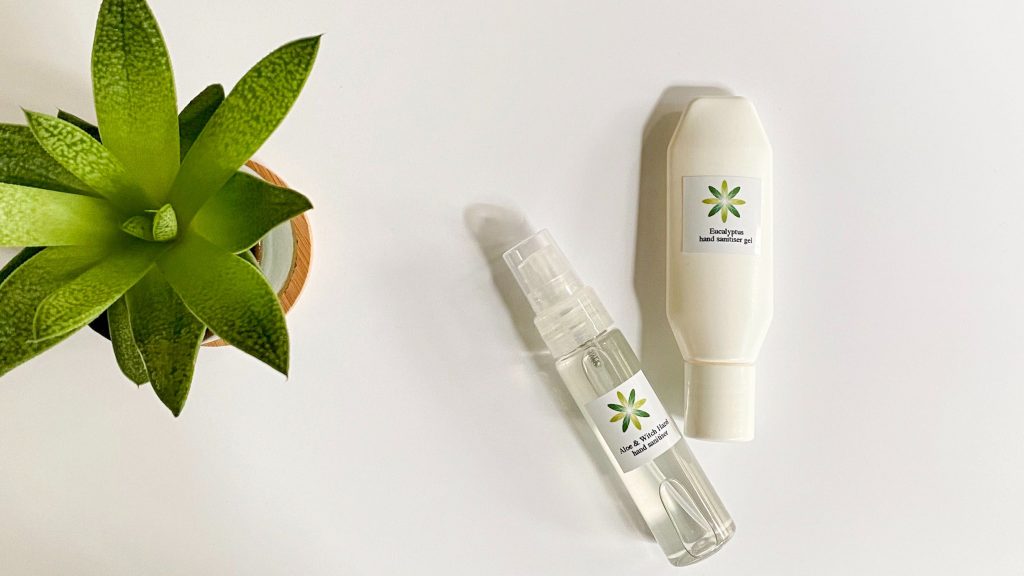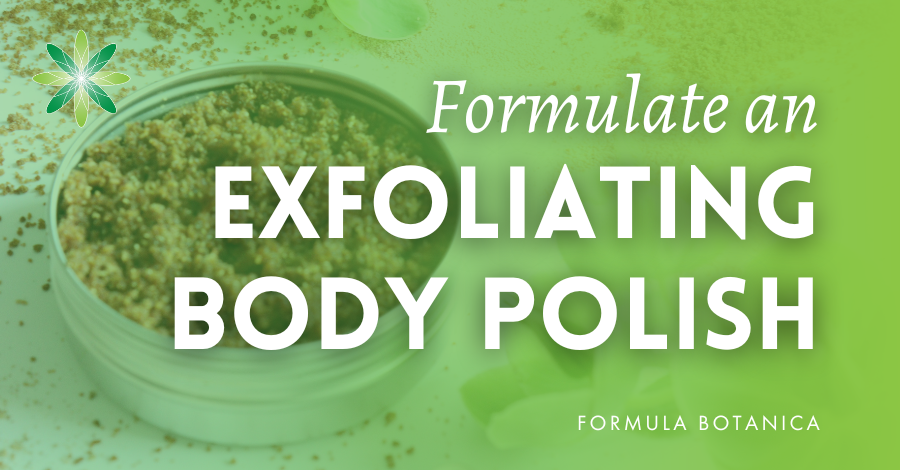Everyone is talking about COVID-19 (coronavirus) at the moment. The beauty industry has postponed major conferences around the world and people are panic buying food, toilet paper and soaps in the supermarkets. You may also have noticed that the hand sanitiser shelves in your local stores are empty.
In this post, we offer two hand cleanser formulations which are ideal for use when you are out and about and do not have access to soap and water for regular hand washing. You will learn how to make natural hand cleanser that is both effective and easy to prepare. There is a big difference between a hand cleanser and a hand sanitiser.
In some parts of the world, including the EU, hand sanitisers are viewed as pharmaceutical, medicinal or biocide products. Depending on the jurisdication and regulatory authority, use of the word sanitiser may imply the product is automatically making claims about its efficacy in killing, removing, or rendering harmless microorganisms.
A hand cleanser is a topical cosmetic product that cleans, cleanses and may care for the hands but does not make claims about nor has been tested for its efficacy in killing microorganisms, including viruses.
Hand sanitisers generally come in the form of an alcohol-based gel. You use them by applying a coin-sized amount to the palm of one hand, rubbing your hands together covering the whole surface of your hands and fingers. While some hand cleanser formulations may contain alcohol they are classified as cosmetics in most jurisdictions.
Disclaimer: the natural hand cleanser formulations in this blog post do not provide proven protection against microorganisms. The formulations provided in this blog post are for home-use only and have not been tested for efficacy. The World Health Organization’s standard recommendations to prevent infection spread include regular hand washing, covering mouth and nose when coughing and sneezing, thoroughly cooking meat and eggs. Avoid close contact with anyone showing symptoms of respiratory illness such as coughing and sneezing.
How does a Natural Hand Sanitiser work?
Hand sanitisers work because they contain alcohol. The alcohol destroys the cells walls and membranes of bacterial cells and the envelope of viruses. If your natural hand sanitiser doesn’t contain alcohol, it may still kill bacteria but will be less effective against viruses. In other words, you need alcohol to make natural hand sanitisers.
If a hand sanitiser contains over 60% alcohol, it can be effective at killing viruses and providing a degree of protection. However, if your hands are dirty, that will make harder for the sanitiser to be effective, so you need to pair your hand sanitiser with good hand washing. Make sure you wash your hands for at least 20 seconds – if you need an easy way of timing your hand wash, try to sing Happy Birthday at the same time!
Mainstream hand sanitisers also sometimes use chemicals such as chlorhexidine and benzalkonium chloride, but these chemicals would not be accepted in natural formulations.
One of our hand cleanser formulations requires alcohol. The biggest struggle that you will face as a formulator is obtaining ethanol. Ethanol is difficult to come by as you need to register with the authorities in your country to buy pure ethanol, which isn’t always achievable for indie formulators. An alternative option is isopropyl alcohol, which is not natural. You may read DIY blogs that tell you that you can use vodka, but keep in mind that vodka typically contains 40% alcohol, which would not be sufficient to kill or deactivate microorganisms.
20 Antiseptic Herbs for your Formulation
Once you start making your natural hand cleanser, you may want to incorporate various plant extracts to provide additional antiseptic properties. Luckily, the plant kingdom is full of amazing herbs that contain active compounds such as phenolic compounds, tannins, terpenoids, alkaloids and flavonoids, which have been shown to have antimicrobial properties.
We’ve summarised 20 different antiseptic herbs and their active compounds in this table.
| PLANTS WITH ANTISEPTIC PROPERTIES | ACTIVE COMPOUNDS |
| Dill (Anethum graveolens) | Essential oils, Phellandrene, limonene, anithofuran |
| Eucalyptus (Eucalyptus globulus) | Tannins, Polyphenols, Terpenoids |
| Garlic (Allium sativum) | Allicin, Ajoene, Sulfoxide sulfated Terpenoids |
| German Chamomile (Matricaria recutita) | Terpenoids, Flavonoids, Coumarins |
| Gotu kola (Centella asiatica) | Terpenoids, Asiaticoside |
| Greater burdock (Arctium lappa) | Polyacetylene, Tannins, Terpenoids |
| Mangosteen (Garcinia mangostana) | Xanthone derivatives, Mangostins |
| Neem (Azadirachta indica) | Triterpenes, Azadirachtin |
| Onion (Allium cepa) | Allicin |
| Peppermint (Mentha piperita) | Terpenoids, Menthol |
| Peppers (Capsicum annuum) | Capsaicin, Terpenoids |
| Roman Chamomile (Anthemis nobilis) | Terpenoids, Flavonoids, Coumarins |
| Rosemary (Rosmarinus officinalis) | Essential oils, Terpenoids |
| Sacred Fig (Ficus religiosa) | Tannins, Saponins, Flavonoids, Terpenoids |
| St. John’s Wort (Hypericum perforatum) | Anthraquinones, Hyperecin |
| Tarragon (Artemisia dracunculus) | Caffeic acids, Tannins, Terpenoids |
| Tea (Camellia sinensis) | Flavonoids, Catechin |
| Thyme (Thymus vulgaris) | Caffeic acid, Terpenoid Thymol, Phenolic alcohol,Tannins, Polyphenols, Flavones |
| Valerian (Valeriana officinalis) | Essential oils, Terpenoids |
| White willow (Salix alba) | Salicin, Tannins, Phenolic glucosides |
Reference: Khanam, S. & Asfar, Z. 2013. Herbal Disinfectants: A Review.
Make your own Natural Hand Cleanser Gel
A natural formulation without alcohol
We’ve created two different formulations for you: the first does not contain alcohol, so you need to be aware that this will not be as effective as a formulation based on alcohol. The second formulation is alcohol based.
| Phase | Ingredients | Weight (grams) |
| A | Aloe vera Juice 1:1 | 51.40g |
| A | Witch hazel | 40.00g |
| A | Panthenol | 0.50 |
| A | Chelator – Dermofeel PA3 | 0.10g |
| B | Glycerine | 3.50g |
| B | Konjac gum | 1.00g |
| B | Xanthan gum | 0.25g |
| C | Cocamidropropyl Betaine | 2.00g |
| C | Preservative Eco | 0.80g |
| C | Sweet Orange essential oil | 0.20g |
| C | Eucalyptus essential oil | 0.15g |
| C | Tea tree essential oil | 0.10g |
| Total: 100.00 |
Method of Manufacture
- Blend Phase A together in a beaker.
- Blend the glycerine and gums to make a slurry in a separate beaker (Phase B).
- While stirring Phase A, slowly and gradually add Phase B. Stir well. If you have a magnetic stirrer, that will work well.
- In a third beaker, weigh the essential oils and preservative. Add the Cocamidopropyl betaine which will act as a solubiliser.
- Transfer Phase C now to the gel.
- Adjust your formulation’s pH to 5.
- Transfer the gel into a bottle with a flip top.
Formulation Tips
- Konjac and xanthan gums work well together but you can use one or the other. In that case, you may need to rework the ratios.
- The surfactant (Cocamidopropyl betaine) helps with dispersion of the essential oils
- The formulation contains no added alcohol although witch hazel sometimes contains a small amount of alcohol, so bear this in mind. We used witch hazel with 14% alcohol content. For this reason, we kept the ingredient at 40%.
- The gums will not work with a high alcohol content (they will not create a gel).
- You can try using rosemary, tea tree, manuka, eucalyptus hydrosols too for their antiseptic properties.
Make your own Hand Cleanser Spray
A semi-natural formulation with alcohol
| Phase | Ingredients | Weight (grams) |
| A | Distilled water | 29.05g |
| A | Glycerine | 3.00g |
| A | Panthenol | 0.50 |
| B | Cocamidopropyl betaine | 2.00g |
| B | Sweet Orange essential oil | 0.20g |
| B | Eucalyptus essential oil | 0.15g |
| B | Tea tree essential oil | 0.10g |
| C | Isopropyl Alcohol 99% | 65.00g |
| Total: 100.00 |
Method of Manufacture
- Blend your Phase A ingredients in a clean beaker.
- Prepare Phase B: Weigh out the essential oils and add the cocamidopropyl betaine. It will create a paste.
- Add the alcohol (Phase C) to Phase A and blend together well.
- Add the solubilised Phase B to the combined Phases A & C.
- Adjust the pH to 5.
- Transfer into a clean spray bottle.
Formulation Tips
- The surfactant will act as a solubiliser of your essential oils.
- If you cannot find 99% isopropyl alcohol, you can try to replace the alcohol and the water (together) with 70% isopropyl alcohol. The issue may be that the remaining 30% of this blend may not be just water but may also contain some other additives. Keep in mind that isopropyl alcohol is not natural.
- Using vodka instead of alcohol will not create an effective sanitiser due to its low alcohol content.
- You can try using lavender, rosemary, thyme, sage, manuka essential oils too for their antiseptic properties.
References
- Compound Chem, 2020. Coronavirus: Do hand sanitisers protect against infections?
- Kalaivani et al., 2018. A Study on Evaluation and Effectiveness of Herbal Hand Sanitizer and its Anti Bacterial Activity
- Khanam, S. & Asfar, Z. 2013. Herbal Disinfectants: A Review
Please note that this post, first published on 5th March, 2020, was updated in January 2021 to clarify that the formulations presented here are classed as hand cleansers and not sanitisers.
Leave us a comment

Timi was a key member of the Formula Botanica team from 2015 to 2020; first as our Education Manager and then as Head of Formulation & Research. You can find out more about the Formula Botanica team here.


























